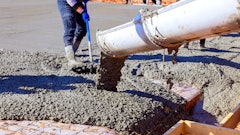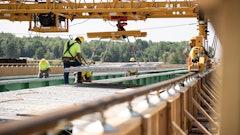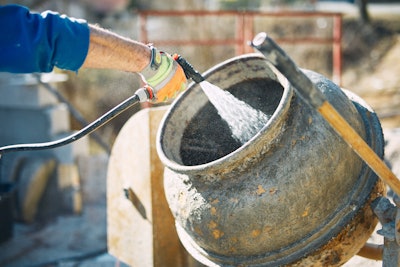
A deepening global water crisis is becoming increasingly harder to ignore. Experts project a staggering 40% gap between the supply and demand for clean water worldwide by 2030. The building and construction industry is a significant consumer of freshwater, accounting for approximately 15%, largely due to the extensive use of this resource throughout multiple phases of the lengthy construction process.
This pressing situation raises crucial questions about the future of water consumption and the potential for the construction sector to pivot toward more sustainable practices. The role of water in construction is multifaceted, from dust control to equipment cooling and sanitation on worksites. But the biggest contribution to the growing crisis comes from mixing and curing concrete, which is the cornerstone of modern construction.
Concrete uses up about 1 billion cubic meters of water every year. As a result, regulatory authorities like the Construction Leadership Council in the U.K. have provided guidance in an attempt to heavily reduce the use of drinkable water in construction. Unfortunately, such guidance seems so far to have made little progress in reducing the industry’s water usage. Despite growing recognition of the need for sustainability, the path to reducing water usage is ambiguous and full of challenges.
There is hope, however. Innovations in construction materials, providing more water-efficient alternatives to concrete, promise possible reductions in water usage, despite their current limitations. Moreover, adopting practices like using non-potable water, on-site water recycling, and efficient water management could play a crucial role in steering the construction industry towards a more water-efficient future.
Fixing Concrete’s Water Problem
Let’s take a closer look at concrete alternatives that reduce the industry’s dependence on high-levels of water. Companies producing mycelium, hempcrete, ashcrete, and green concrete all seek to use the least amount of water possible in their production process. Mycelium is produced from the root structure of fungi and can be transformed into bricks, panels, or blocks for building. It requires cultivation in controlled conditions where it binds a substrate, such as agricultural waste, to form solid blocks. But since it’s a biomass material that is more complicated to make, less strong, and harder to find than standard concrete, it’s hard to imagine mycelium replacing concrete any time soon.
Another option is hempcrete, which is made up of hemp fibers mixed with lime and water. Hemp is easy to grow with little water and reaches maturity quickly in various environments, so countries around the world can make use of it. While the manufacturing process of hempcrete still mainly involves the mixing of dry materials with water, it consumes considerably less water than the extensive mixing and curing processes associated with conventional concrete, and it’s lighter and easier to handle as well. Unfortunately, it’s also considerably less strong than concrete. As a result, construction companies mostly use it for either insulation or for interior partitions rather than for standard floors or exterior walls.
Ash concrete, also known as ashcrete, uses fly ash from coal mixed with lime and water. Ashcrete requires 10% less water than regular concrete. That means that if everyone used ashcrete, concrete’s water usage globally would go down by about 100 million cubic meters each year. Ashcrete is also quite durable and relatively easy to produce while also repurposing coal waste, so it supports water conservation and a circular economy.
Lastly, green concrete is produced by reusing waste materials from various industries to create a material that is highly durable but also cost effective and energy efficient. It also requires less water during the manufacturing process compared to regular concrete, so it is growing in popularity as a way to promote sustainability through construction.
Less Water In Daily Processes
Despite their benefits, most of the sustainable building materials listed above are either more expensive and not as durable as conventional concrete. But increased sustainability doesn’t always imply increased costs and less sturdy materials. Another option that construction companies have in the short term is simply focusing on using impotable water, meaning water that isn’t suitable for drinking. Any water that doesn’t introduce damaging substances or chemicals into the concrete is suitable.
Another pathway is through using cutting-edge WaterTech startup solutions that seek to promote water conservation and efficiency. New startups are already offering technologies to help companies curb their water use and assess risk. Waterplan is such a startup. It seeks to accelerate the transition to a water-secure world with their leading platform to measure, respond, and report water risk.
On the other hand, some startups are transforming water to increase its supply and recyclability. OceanWell uses modular deep sea water technology to harness hydrostatic ocean pressure to naturally power the reverse osmosis process and produce fresh water, redefining the desalination game. Moreover, SkyH20’s Atmospheric Water Generation (“AWG”) systems supply renewable water for commercial, industrial and government application to ensure water security, self-reliance and independence. Startups' powerful technologies are a promising solution to make ‘Water 4.0’ a reality in the construction industry.
Many contech and climatetech investors, venture capitalists, and corporate venture capitalists have their eyes set on WaterTech startups as attractive and lucrative investment opportunities. This is due in part to global water stress caused by increased water demand from growing populations and climate change, but also the adolescence of the WaterTech market, which is ripe for disruption and not yet overcrowded and competitive.
Tough Road Ahead
The construction industry will have to make major changes in everything from concrete production to daily water usage and treatment if it wants to move from being a water-intensive industry to more water-efficient. Still, the data certainly seems to indicate the changes are worth the challenge. No matter the avenue, the construction industry currently stands at a crossroads, and needs to confront the sustainability challenge head-on.


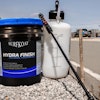
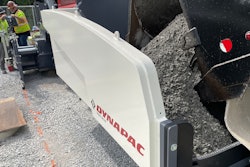
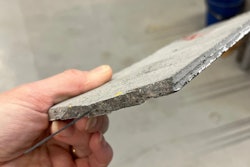
![Glp Porsche 072723 465 64ee42287c29e[1]](https://img.forconstructionpros.com/files/base/acbm/fcp/image/2024/03/GLP_PORSCHE_072723_465.64ee42287c29e_1_.65e88b8589b9c.png?auto=format%2Ccompress&fit=crop&h=167&q=70&rect=0%2C520%2C2250%2C1266&w=250)












